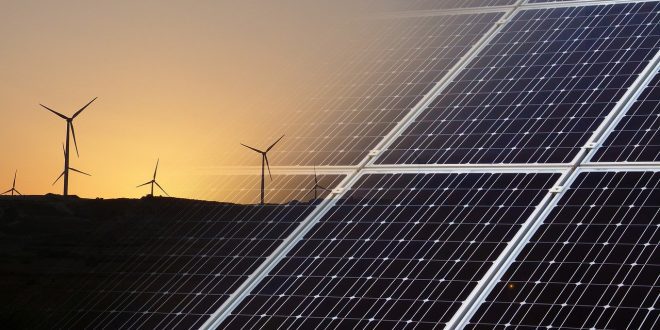The rise of green energy inventions like solar thermal, wind turbine, and biobattery are shaping the way we think and live in a carbon-dependent industry.
Furthermore, the cheap and clean energy generators enabled a paradigm shift towards adopting modern structural designs in energy independence.
These green alternative energy inventions have gained global fascination. For instance, Toyota plans on continuing the production of its first-generation hydrogen fuel vehicles despite other manufacturers focusing only on electric.
The green energy market is anticipated to grow significantly over the next few years. In 2017 it was valued at 928 billion. In 2025 it’s expected to reach 1,512 billion.
With growth, the competition of legal ownership in this sector has gotten more competitive and complex.
Today, an inventor needs to have patent protection along with the necessary time and space to create, use, and sell the invention without the threat of outside claims.
Green Energy and its examples
Green energy is the renewable electricity produced from renewable sources like solar, wind power, geothermal, biomass, and small hydroelectric plants that create minimal impact on the environment.
It is often called “alternative energy” due to the shift of utilizing decarbonized models of renewable sources instead of traditional fossil fuels.
While fossil fuels take millions of years to replenish and diminish in further use, green energy sources are unlimited energy sources that are naturally replenishable.
At present, renewable resources are hydroelectric, geothermal, biomass, wind energy and solar.
Take note that each green energy source has a distinguishing natural characteristic.
Hydroelectric powers are produced by waterfalls that convert kinetic energy from flowing water into mechanical energy that generates electricity.
In the last decade, 20% of the world’s electricity came from hydroelectric plants (88% of the renewable energy supply).
Some technologies that convert hydroelectric powers are Run-Of-The-River Hydroelectricity and Hydroelectric Power Pumped Storage.
Geothermal energy is derived from the heat of the Earth, particularly sourced close to the surface or from heated rock and reservoirs of hot water in Earth’s crust.
Geothermal power plants use steam turbines to generate electricity.
Wind Energy is dependent on solar energy due to the uneven heating and cooling of wind temperature. Wind turbines propel a generator that converts energy to electricity.
Solar Energy is the most abundant energy that is sourced from the sun’s radiation. Solar-powered photovoltaic (PV) panels stimulate electrons in silicon cells using the photons of light emulated from the sun, converting sun’s radiation into electricity.
Understanding Patents
Your patent starts with an idea or an invention. However, your idea can’t stand alone.
Generally, an idea or invention should comply and possess four statutory requisites for patent eligibility:
- Your invention must comply with the subject matter eligibility.
- Your invention must be novel.
- Your invention must be useful.
- Your invention must be non-obvious.
In the application for patenting Green Alternative Energy Inventions, subject matter eligibility needs a complex comprehension.
Why?
Subject Matter Eligibily qualifies for patent eligibility. It has two-fold features:
First, an invention or idea should fall under the four statutory categories.
Second, an invention should integrate the judicial exception into a practical application.
Today, green alternative energy inventions are new and advanced technological innovations. That being said, they are subject to scrutiny in terms of their patent eligibility and abstract nature.
Recent guidelines of patent laws stipulate that the USPTO provides a list of abstract ideas that can be classified and directed as:
- Mathematical concepts
- Methods for organizing human activities
- Mental Processes
- Laws of nature, and
- Natural phenomena.
If your alternative invention is not directed to five fundamental abstract ideas, then your invention is patentable. Otherwise, you need to determine whether your invention involves abstract concepts to a new and practical application.
Furthermore, if an invention uses natural law in practice, the Court requires the combination of elements or “inventive concept” that significantly feature more than the use of natural law to work.
If an inventive concept can be demonstrated, the claim may be eligible for patentability.
Complexities of Patenting Green Alternative Energy Inventions
It is important to consider the costs, characteristics, and possible consequences on how to patent your invention.
Cost
A patent cost depends on what an invention it is and what type of patent it belongs to.
Your invention’s conceptual framework and earnest diligence take a major process in conceiving an invention.
Always consider the marketability and patentability of your invention.
Reflect and ask yourself: Are your targeted and desired customers willing to pay money for your new invention? Is your invention an alternative or an upgrade to prior inventions that already exist?
Nevertheless, utility patent applications generally range from $10,000 – $40,000+. Under the supervision and legal assistance of a patent attorney, the patent costs cover:
- Initial Consultation
- Patentability Opinion
- Drafting/ Filing Patent Application
- Post-Filing/ Office Actions
Characteristics
Now in the case at hand, Green Alternative Energy Inventions are under Utility Patents.
A utility patent protects the structure, composition, and invention’s functionality that lasts 20 years from the earliest filing date.
As a general rule, your invention needs to comply with the four statutory requirements provided by the law, including its subject matter eligible, utility, novelty, and non-obviousness.
The common pitfalls on an alternative invention stems from its lack of utility.
Some inventions promise a valid claim on perpetual motion machines and zero-cost energy production. When it undergoes an examiner’s scrutiny, it requires demonstration which results in weak and void presentation.
Always remember that your examiner looks closer at the details on how your alternative invention functions feasibly and practically.
Consequences
Alternative energy inventions are available at a cheap price today. Due to their high demands and sustainability, their market value will drive up prices and will make inventions more expensive.
Importance of a Patent Attorney
It is always best to have a U.S. Patent Lawyer who provides significant legal advice about complex issues regarding patent protection.
J.D. Houvener a Washington DC Patent Attorney, underscores the significant role of a patent attorney:
“Securing a patent attorney comes with two-fold benefits: first, it assures you to get things done right, and second, it gives you the best benefit you need. If you seek professional guidance in patent application, always seek a patent attorney who guides you with a clear understanding of the scope of your rights and patent processes. You’re saving not only your time but also your efforts.”
Conclusion
Albert Einstein once said, “We cannot solve our problems with the same thinking we used when we created them.”
Green Energy makes our future more secure. Not only does it provide a cleaner healthier environment, but economic growth as well.
 Alternative Energy HQ solar power for homes, wind energy, and bio fuel issues
Alternative Energy HQ solar power for homes, wind energy, and bio fuel issues








